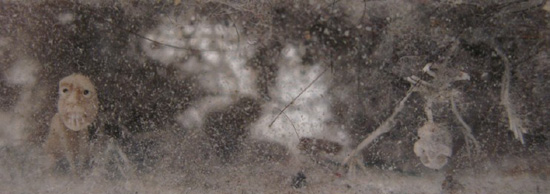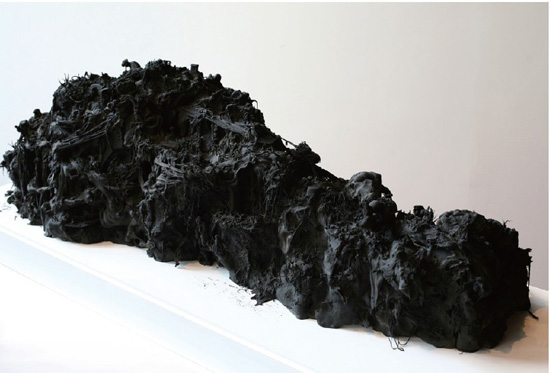|
Introduction of the artist:

HAM Jin (South Korea)
Born in 1978, Seoul, South Korea. Lives and works in Seoul. Selected solo
exhibitions: 2011 PKM Gallery, Seoul / 2008 Debris People, Miki Wick Kim
Contemporary Art, Zurich / 2007 The Others, Aomori Contemporary Art Centre,
Aomori, Japan / 1999 Imaginative Diary, Project Space Sarubia, Seoul / Selected
group exhibitions: 2011 Countdown, Culture Station Seoul 284, Seoul / 2010
Plastic Garden, Minsheng Art Museum, Shanghai / 2009 Cold Cell, Union Gallery,
London / 2008 Today's Korean Art . The World of Expression, Seoul Arts Center /
2005 51st Venice Biennale / 2003 Facing Korea: Demirrorized, de Appel Arts
Centre, Amsterdam / 2002 the 4th Gwangju Biennale, Korea.
Introduction of works:






Underneath It, mixed media installation, 2007, courtesy of the artist and
PKLL Gallery/Bartleby Bickle & Meursault

Rabine, polymer clay, styrofoam on wire armature, 40.5×144×51cm, 2012,
courtesy of the artist and PKLL Gallery/Bartleby Bickle & Meursault
Ham Jin seems to have been living in a different world, a micro-one, with a
particular set of fantasies. Derived from a childlike imagination since young,
he interprets “a spectacle that is a part of everyday life but invisible to the
eye” through his miniscule clay sculptures. The work Underneath It presents
visual stories that the artist collected and edited from barely noticeable
scenes in the marginal spaces. Made out of hairs and dust, it is situated in the
17-metre-long crevices between the walls and floor of the gallery, which is an
otherwise empty space. In this rather ‘minimal’ installation, the audience is
invited to use magnifiers to view through the gaps, a drama of homunculi,
somehow grotesque. The presented characters are seen carrying half a peanut as a
large boulder, fighting with small insects, or surviving from a dust flood. If
the drama has some comic quality, then it must be a bitter one, where the
mini-creatures are burdened by another worldly life, filled with envy, murder
and malice leading into endless conflicts and disasters.
In the most recent work, Ham re-visits a seemingly old-fashioned genre –
‘figurative sculpture’ – in a unique way. His sculptures evoke the human figure,
yet in an abstract form to reveal the structure inside the body. They are shaped
as chaotically intertwined webs that continue to expand, or abandoned landscapes
left over by natural or manmade calamities. After all, he is not necessarily an
anatomist, but an explorer discovering the ignored truth, as well as the hidden
realm beneath the surface.
| 
